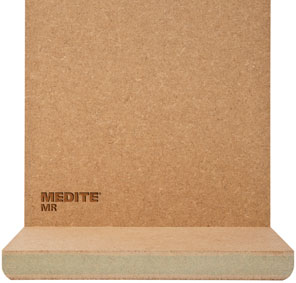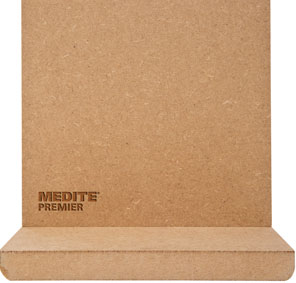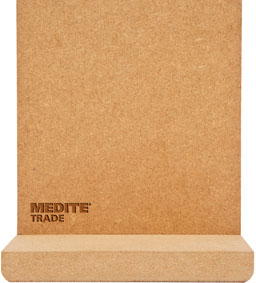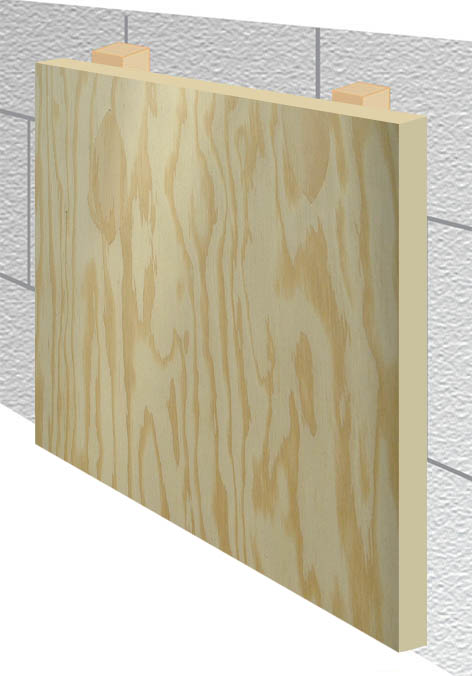Media & Downloads





Construction Products Regulation (CPR)
In line with legislation introduced on 1st July 2013, Creffields are obliged to make available to any customer using timber as a ‘construction product’ a ‘Declaration of Performance’ (DoP) for that product to support the CE marking that it carries. By definition a construction product is any product or ‘kit’ which is produced and placed on the market for incorporation in a permanent manner in construction works or parts thereof and the performance of which has an effect on the performance of the construction works with respect to the basic requirements for construction works. If you are using timbers and laminates supplied by us as construction products then please use the following links to access the relevant DoP documents:
Medite Products
DoP - Medite CLEAR MDF
DoP - Medite Premier L-MDF
DoP - Medite Trade L-MDF
DoP - Medite Exterior MDF.H-2
DoP - Medite FR L-MDF Euro Class B
DoP - Medite FR MDF Euro Class B
DoP - Medite MR MDF.H-1
DoP - Medite Premier MDF
DoP - Medite Tricoya MDF.H-2
Other Products
Chipboard
DoP - Chipboard/T&G ChipboardOSB3
DoP - Standard OSB3Plywood
DoP – WISA Spruce PlywoodDoP – FR Euro B Wisa Spruce Plywood
DoP – Finnish Birch Plywood
DoP – Latvian Birch Plywood
DoP – Rigatex (non slip) Birch Plywood
DoP – Selex 21-18-12 mm Plywood
DoP – Marine Plywood
DoP - Q Mark Hardwood FSC Plywood
DoP - Chinese Hardwood Plywood
DoP - Jade FSC Hardwood Plywood 9mm to 25mm
DoP - Chinese Streply Plywood
DoP - Malaysian Hardwood Plywood
DoP - Metsa Spruce Plywood
DoP - Flexible Plywood (PT1)
DoP - Flexible Plywood (PT2)
DoP - Randa Elliotis Plywood FSC
DoP - Sudati Elliotis Plywood FSC
Hardboard
DoP - Standard HardboardDoP - Oil Tempered Hardboard
Softwood
DoP - CLS TimberHEAT TREATED SOFTWOOD CERTIFCATE
Certification
COVID-19
Covid-19 safe at work
Covid-19 Risk assessment
Policies & RAMS
Modern Day Slavery – Transparency in supply chain
UK Timber Regulation - UK TR
Timber and Timber Products Regulation Compliance
Environmental Policy
Health & Safety Policy
Delivery Risk Assessment - RAMS
Questions and Answers
Below are just some of the regular questions we get asked about our fire retardant treatments. Should you need more detail from the answers supplied or have other questions, please contact Creffields on 0118 945 3533 or email us info@creffields.co.uk
Are these new Euroclasses as good as the old Class 1 / Class 0?
The simple answer is that the new Euroclasses are underpinned by more up-to-date test methods compared to the old British Standards of Class 1 & Class 0 and trying to compare old and new is the wrong approach.
Class 1 involved a measure of the Surface Spread of Flame (SSF).
Class 0 included a measure of SSF and heat release.
The Euroclass SBI test measures a wider scope of fire critical factors than the old Class 1 /0 tests, namely spread of flame, heat release, fire growth rate & smoke levels. EUROCLASSES ARE MORE ROBUST
Building Control want evidence that the fire treated plywood I am supplying will be Euroclass B / Euroclass C compliant. What documentation do I need?
Fire Treatment Certificate sent upon dispatch of an order which itemises the customer name and order details. Generally this is what is presented to Building Control.
A species/thickness specific Euroclass Classification Report can also be provided for the plywood in question if needed to support an enquiry.
FULL EVIDENCE OF COMPLIANCE = TREATMENT CERTIFICATE + CLASSIFICATION REPORT
Can T & G plywood be fire treated?
Ply can be fire treated when the T & G’s are already machined, either on 2 sides or all 4 sides. The ply must be kiln dried after fire treatment to ensure the T & G will fit together. Alternatively, full sheets can be processed that can be machined after.
How many new Euroclass Classifications are there for fire performance and which are relevant to plywood?
The Euroclass system applies to other materials not just plywood.
Untreated plywood would achieve a Euroclass D when tested. Treatments can upgrade ply to either Euroclass B or Euroclass C as required.
| Typical products | Euroclass | Euroclass test requirements |
| Totally inorganic products made from stone, concrete, bricks, ceramics, glass or steel | A1 | EN ISO 1182 EN ISO 1716 |
| Products as Euroclass A1 but containing not more than 1% by weight or volume (whichever is the lower) of homogeneously distributed organic material. Gypsum boards, mineral wool | A2 | EN ISO 13823 EN ISO 1182 EN ISO 1716 |
| Gypsum boards with thin surface linings. Highest possible level for fire retarded wood products. Cement-bonded particle board ≥ 10mm thick | B | EN 13832 (SBI) EN ISO 11925-2 (SFI) |
| Gypsum boards with thick surface linings. Fire retarded wood products | C | EN 13832 (SBI) EN ISO 11925-2 (SFI) |
| Untreated wood products with a thickness ≥ 5mm and density of ≥ 400 kg/m3. Plywood and OSB ≥ 9mm thick | D | EN 13832 (SBI) EN ISO 11925-2 (SFI) |
| Untreated wood products with a density of < 400 kg/m3. Low density fibreboard. Plastic-based insulation | E | EN ISO 11925-2 (SFI) |
| Untested products | F | No requirements |
If fire treated plywood is cut on-site does it need any extra protection?
No additional treatment is required to the cross cut ends of fire treated plywood.
Is CE Marking of fire retardant treated plywood required?

My customer has a specification that asks for a FR3 fire retardant treatment. What does this mean?
The UK Wood Protection Association (WPA) has a number of commodity specifications relating to fire retardant treatment. Each of these commodity specifications ONLY classifies the end use which is then used as a guide to select the appropriate fire retardant treatment. THEY DO NOT STATE WHAT FIRE PERFORMANCE OR WHAT FIRE TREATMENT IS NEEDED.
The list of commodity specifications is as follows:
FR1 – Non load bearing dry interior use
FR2 – Load bearing dry interior use
FR3 – Interior use with a Relative Humidity >75%
FR4 – Weather protected exterior use
FR5 – Weather exposed situation
Plywood specifications would generally involve either one of: FR1, FR2 or FR3
What are Euroclasses and why are they replacing the old Class 1 / Class 0 standards?
In line with the Construction Products Regulation, introduced in July 2013, plywood used in permanent construction is now treated to either Euroclass B or Euroclass C in line with the requirements of the Harmonised Product Standard for Plywood – EN13986.
Class 1 & Class 0 are now obsolete. Euroclass B has replaced Class 0 and Euroclass C has replaced Class 1.
A Euroclass test measures flame spread, heat release, fire growth rate & smoke emission.
A Euroclass Classification for any given plywood species is awarded in accordance with the requirements of EN 13501-1 (Fire Classification of Construction Products and Building Elements).
What are the benefits of factory controlled impregnation treatments over brush/spray surface applied FR coatings?

- Are applied within stringent controlled factory conditions.
- Have full traceability of the treatment process.
- Give deep impregnation to all faces
- The treatment cycle used is specific to the type of plywood being treated

